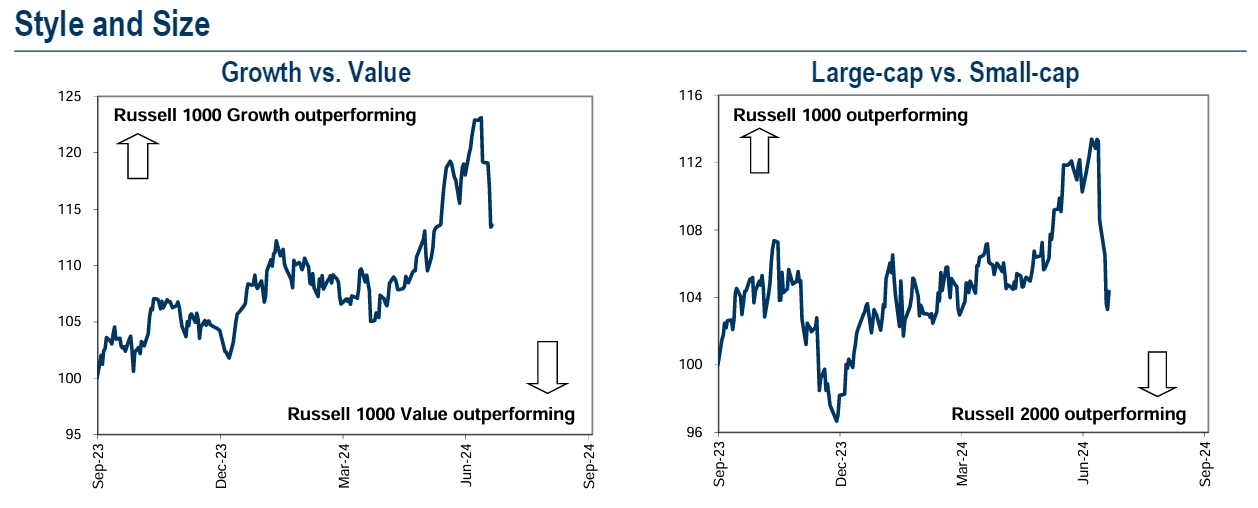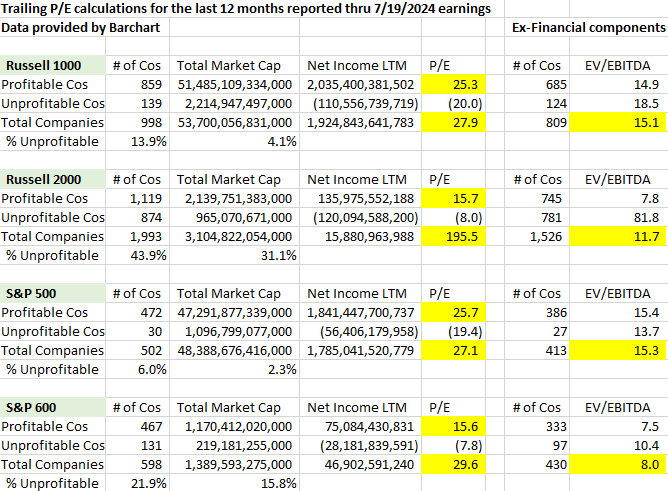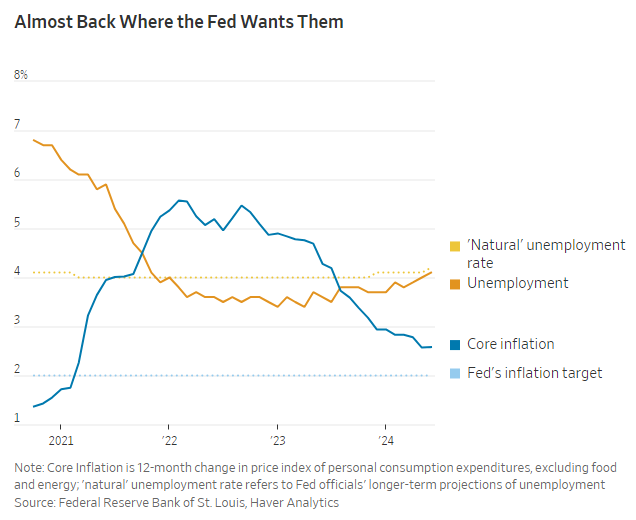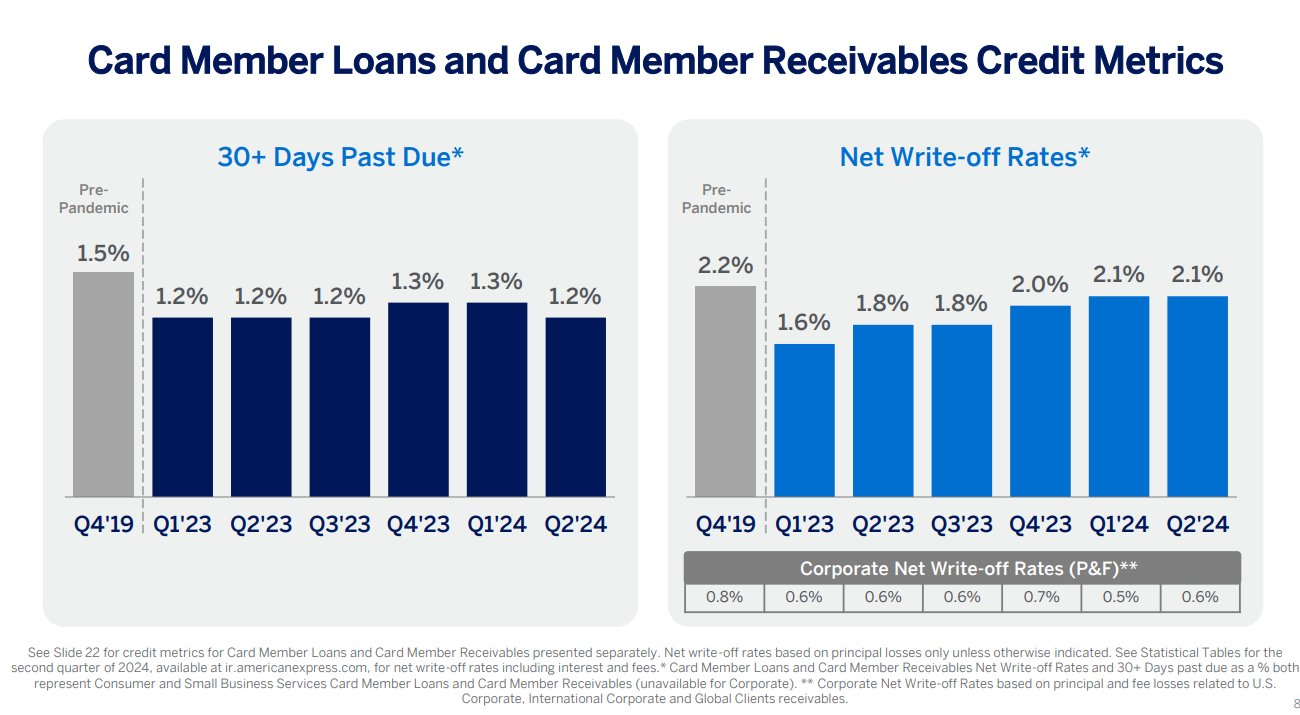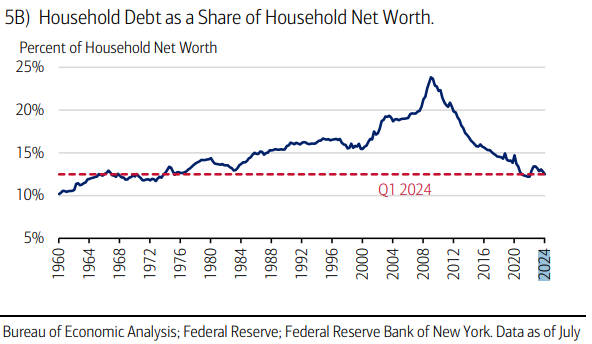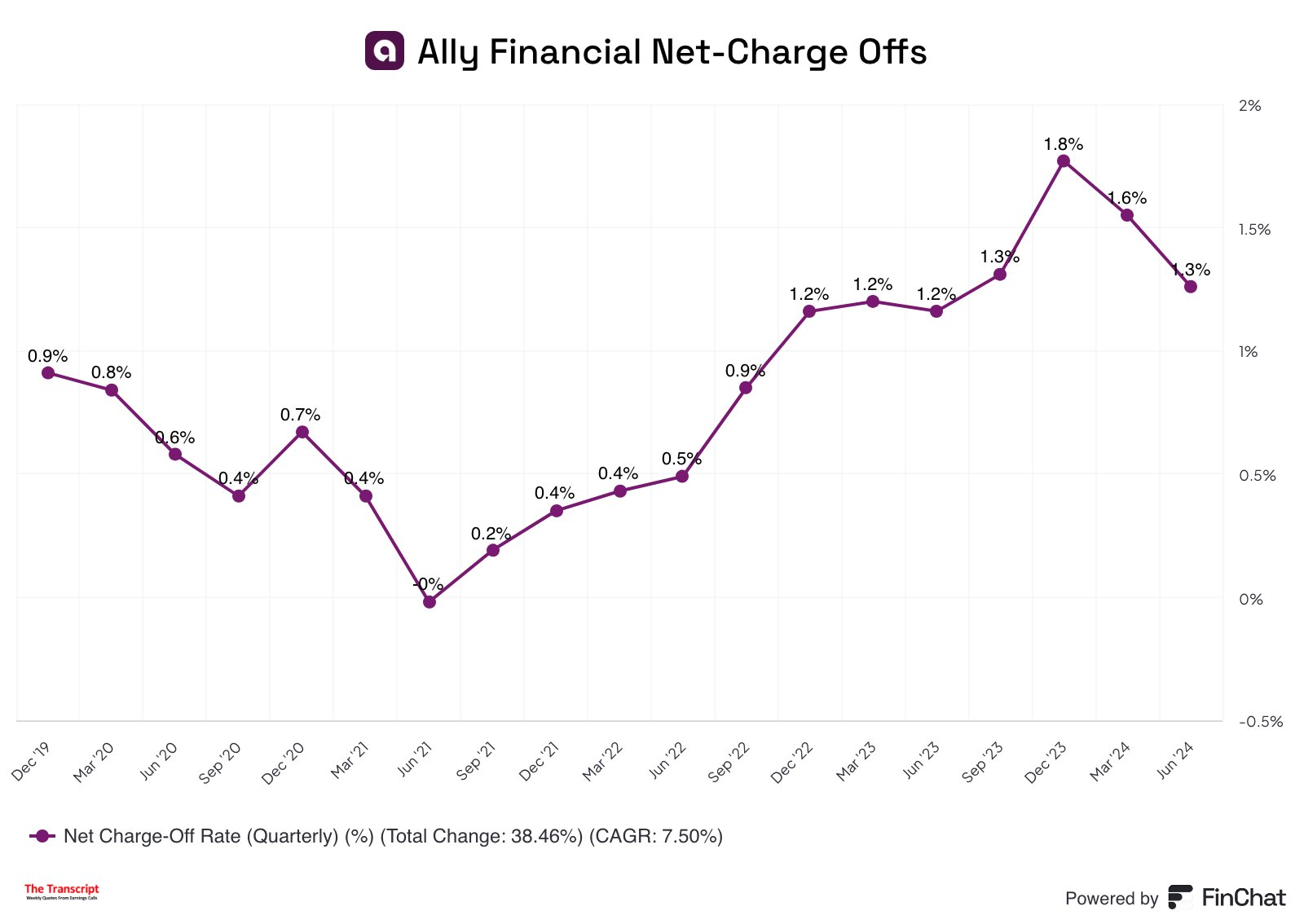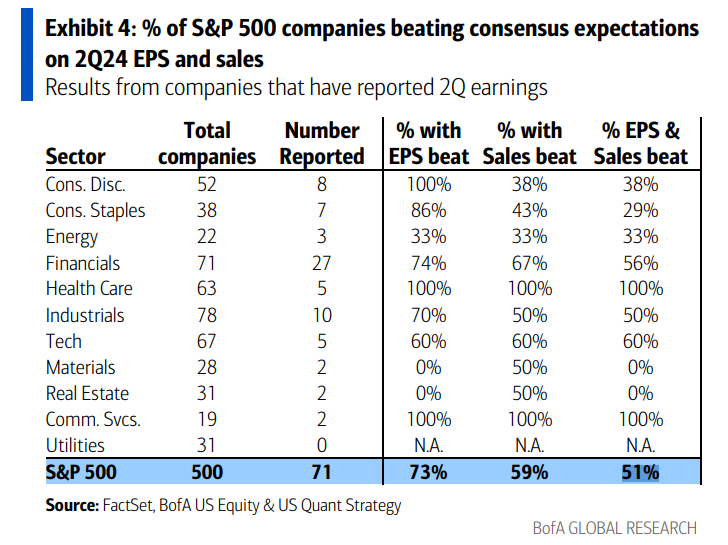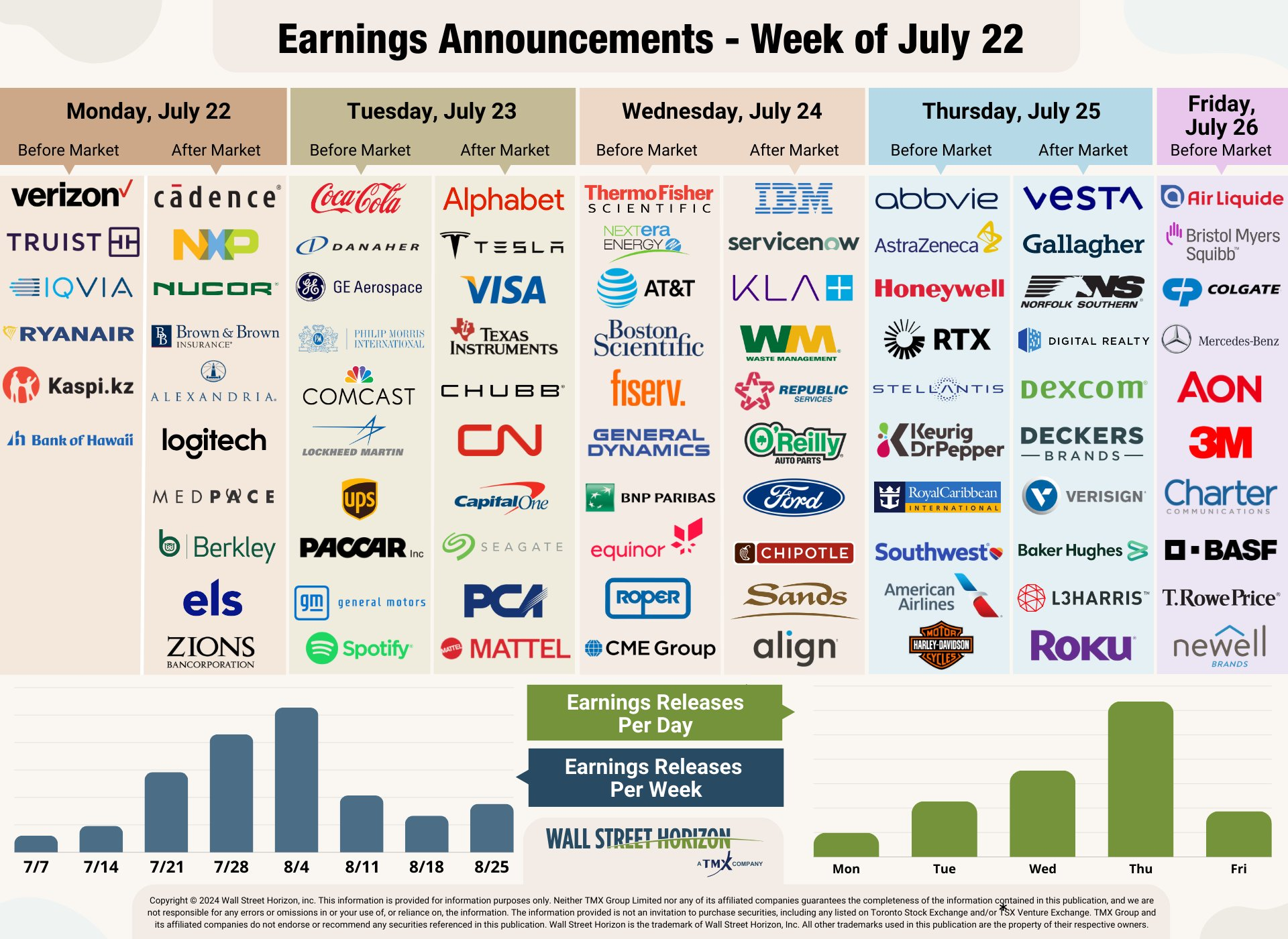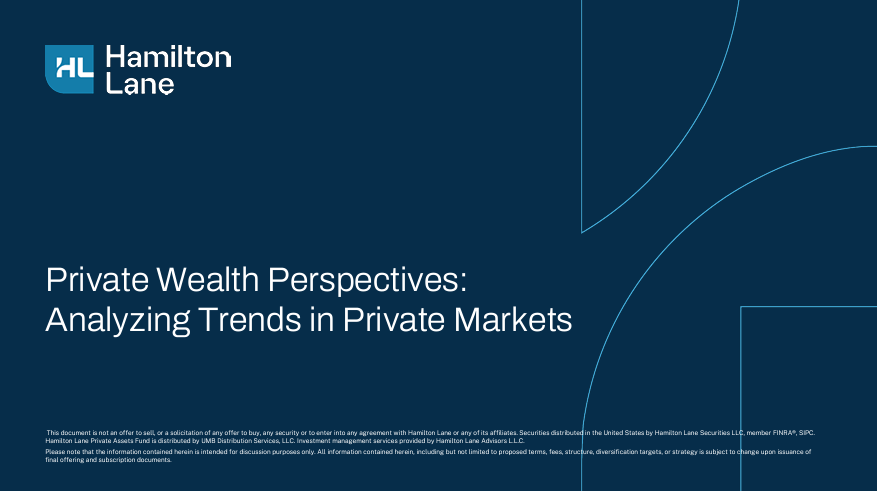
Weekly Research Briefing: Twister Time

In the movie theaters, on your November ballot, and inside of your investment portfolio. What a wild two weeks. Inflation data continues to whirl lower. Early corporate earnings look strong, and the conference call commentary sounds in line with expectations. Credit quality measures out of the financial sector are reassuring and the most recent economic readings continue to show stability. That twist in your stock portfolio was falling inflation pushing the U.S. Treasury yields to four-month lows causing a rush into cyclical, value and small-cap stocks at the expense of the Magnificent-7. We had expected that the market would broaden out once the Fed cut rates, and it looks like July was when the green flag for rotation went up. Where we go from here will depend on how earnings are reported for the next few weeks. Look for Google to set the early Mag-7 tone on Tuesday afternoon.
With earnings in the spotlight, economic data takes a backseat until Thursday when we get the first read on Q2 GDP and Friday when the PCE Inflation series hits the tape. The Fed is in its blackout period ahead of their FOMC policy meeting on Wednesday. A rate cut is unlikely but expect the table to be set for a next meeting cut in September. As for politics, where to start? Back to square one after a very busy week. Now time for team blue to see if they can make some purple after a month of solid red.
And while summer turns toward August, the corporate M&A markets continue to be active. Google is buying the private cyber security firm Wiz for $23b. Darden Restaurants buy's Chuy's at a 65% premium to its public market price. Private equity's Bain buys Envestnet for $4.5b, while Mattel attracts interest from a top GP. And over in the land of activists, Elliot puts in a venti order for Starbucks stock. IPO activity has not been left out as the high quality, small cap insurance platform TWFG Inc. jumped 30% after pricing its listing price 13% above its range midpoint. Nice work by the Morgans.
If you wondered why all your stocks changed trends in the last two weeks, you weren't the only one...
What was up went down, and what was down went up. Is this the start of something bigger or just a healthy factor correction?
Goldman Sachs
Falling interest rates sent small-cap stocks on a tear...
The jump in small caps pushed me to update the P/E and EV/EBITDA valuations for the major U.S. equity indexes...
Below are the updated LTM trailing P/E figures for the S&P 500/600 and Russell 1000/2000 indexes. The only meaningful change in the numbers over the past month was at the Russell 2000 small-cap index which saw some successful companies (like Super Micro) graduate to the Russell 1000 at the quarter end rebalance and take their earnings with them. At the same time, money losing small-cap companies continued to build on their losses. As a result, the all-in now Russell 2000 index is now trading at a 195x trailing P/E ratio. Ridiculous, I know.
I went one step further and kicked out all the financial companies out of the indexes so that I could focus in on EV/EBITDA. As you can see, the R1000 index is trading at 15.1x trailing EV/EBITDA and the R2000 is trading at 11.7x. The R2000 is cheaper, but that is still a healthy valuation for an index where nearly 1/3 of the market cap cannot earn any profits.
For small cap stocks to outperform, they are going to have to put up earnings growth like the large caps...
Few investors will want to hold onto overvalued small caps with little earnings growth and a 1.2% dividend yield. Especially when an investor can earn 4-5% in a Treasury note/bond with little risk of a total loss and upside participation if interest rates move lower.
@ericwallerstein
Do you see the winners in the current overvalued and low quality small-cap company environment?
Private equity firms will have no problem selling their high-quality companies into the starving appetite that exists among actively managed small cap investors. Ditto for public companies looking to spin-off or divest non-strategic assets.
Swedish private equity firm EQT AB is looking to take advantage of an improving mergers and acquisition market to monetize assets and return capital to its own investors, following a prolonged slump in dealmaking.
“We are confident about exits,” Chief Executive Officer Christian Sinding said in an interview Thursday, after the company reported first-half results. “We have a large number of exits that are currently active or in preparation.”
The private equity firm in the first six months of the year, agreed to sell a majority stake in online real estate platform Idealista and completed the initial public offerings of skin-care company Galderma Group AG and health-care payments software maker Waystar Holding Corp.
“IPO market is still fickle but getting better for good companies,” Sinding said. All credit markets, meanwhile, are open and the pickup in dealmaking “is a reflection of improving debt markets,” he said.
Improving conditions for dealmaking are providing a welcomed respite to private equity firms, which have been facing pressure to put capital to work and generate returns for investors and so-called limited partners.
Greg Ip joins many others in saying that the Fed's goals have been met and that a rate cut should happen at the July meeting...
The Federal Reserve pushed interest rates above 5% a year ago, determined to achieve two things: much lower inflation and a cooler labor market.
It has succeeded. Inflation, by its preferred gauge, has fallen from 4.3% then to an estimated 2.6% now, the steepest decline since 1984, and within shouting distance of the Fed’s 2% target. Meanwhile, the unemployment rate has risen to 4.1% from 3.6%, an increase seldom seen outside recessions.
The Fed seems reluctant to take the win. This week Fed Chair Jerome Powell refused to say when, or if, the Fed would cut interest rates, New York Fed President John Williams said he needed more data, and Fed governor Chris Waller merely acknowledged a cut was “getting closer.” Markets expect a cut in September.
The Fed’s reticence is understandable. It likes to telegraph its plans well in advance and, having blown its forecasts on inflation so badly before, is doubly cautious.
But if the Fed were truly data-dependent and trusted its own forecast, it would be comfortable cutting interest rates now. At a minimum, the option should be actively debated at its meeting in two weeks. A cut does bring risks, but so does waiting. Here’s how the Fed should weigh those risks.
The market is targeting 2-3 rate cuts through year end and 5-6 into next summer...
With earnings season in full swing, we are getting plenty of datapoints about the U.S. consumer...
American Express sees the US consumer as consistent. Discover and Synchrony see the lower income consumers as cautious.
"...while spend growth in certain categories was slightly higher or lower versus the prior quarter, overall spend growth was stable and we continue to see strong growth in the number of transactions from our card members, which grew 9% this quarter...So we feel that, look, the US consumer has been pretty consistent and we think it's going to be pretty consistent throughout the year." - American Express CFO Christophe Le Caillec
"We continue to see a cautious consumer, evidenced by less card member spend with lower income households being most affected." - Discover Financial Services CFO John Greene
"...you are starting to see the lower-income consumer pull back a bit. They're rotating into non-discretionary categories. So it's clear that they're feeling the effects of inflation and they're managing to a budget." - Synchrony Financial CEO Brian Doubles
Over at Apollo, Torsten Slok's current economic mosaic suggests the economy is just fine...
The bottom line is that daily and weekly data do not show any signs of a drop-off in economic activity. Instead, the data shows ongoing steady growth around potential, similar to what we have seen over the past year. If the Fed starts cutting rates in September, then stock prices will rise further, credit spreads will tighten, and growth and inflation will start to reaccelerate.
Some sentiment indicators are weaker, including consumer confidence and long-term inflation expectations, but the list above is all hard data that feeds directly into GDP, employment, and inflation.
American Express card delinquency and charge-off trends also point to stability...
@bluff_capital: $AXP American Express: Credit Metrics
Mega card issuer Bank of America said the same...
"...we highlight the 30- and 90-day plus credit card delinquency trends, which show delinquencies have plateaued for the second consecutive quarter. This should lead to stabilized net credit losses in credit card in the second half of the year" - Bank of America CEO Brian Moynihan
Important to note that household debt to net worth is near a 50-year low as home equity and investment portfolios have soared...
@MikeZaccardi: household debt as a share of household net worth is hovering around lows not seen since the mid-1970s
And a deep dive into Bank of America's CRE portfolio shows few reasons to dive down into the root cellar...
@TheTranscript_: $BAC CEO: "We continue to aggressively work through our loans in our modest CRE office portfolio. We saw a decrease in all the categories: a decrease in reservable criticized loans, a decrease in NPLs and a decrease in net charge-offs"
The market told us to stop worrying about real estate six months ago...
Last week's earnings results showed us that SL Green Realty and Blackstone are managing through their large RE portfolio issues just fine. And the stock market has move to reward them and turn their attention elsewhere.
Speaking of real estate, there might be a tailwind building for residential home builders...
I see: 1) Lower interest rates coming. 2) Limited housing supply. 3) Good demographics. 4) A healthy homebuying consumer with low household debt. DR Horton's earnings last week could be a repeatable blueprint as other homebuilders report earnings.
Three-quarters of Ally Financials’ lending is auto exposed, so a pullback in charge-offs is a good sign for the total auto industry...
@TheTranscript_: $ALLY CFO: "Consolidated net charge-off rate of 126bps was down QoQ reflecting typical seasonality..Provision expense of $457M increased from the prior year driven by higher net charge-offs & was down on a linked quarter basis as 2Q is the seasonal low point for retail auto NCOs"
We are only 15% into Q2 earnings season, but so far, so good...
@MikeZaccardi: 71 S&P 500 companies (20% of index earnings) reported so far, beating consensus EPS by 5% in aggregate, driven by Financials (+2% ex-Fins)
This is a big week with plenty of non-bank mega caps hitting the tape...
@WallStHorizon
Texas electricity demand growth forecasted to rise enormously over the next five years...
This came out of the Kinder Morgan earnings call last week. Pretty eye opening.
"The consensus developing that electricity demand will increase dramatically by the end of the decade, driven in large part by AI and new data centers. I'm a firm believer in anecdotal evidence, particularly when it comes from the actual users of that power and the utilities who will supply it, and from the regulators who have to make sure that the need gets satisfied. And the anecdotal evidence over the last few months has been jaw-dropping. Let me give you just a few examples. In Texas, the largest power market in the US, ERCOT now predicts the state will need 152 gigawatts of power generation by 2030. That's a 78% increase from 2023's peak power demand of about 85 gigawatts. This new estimate is up from last year's estimate of 111 gigawatts for 2030. Other anecdotal evidence also supports a vigorous growth scenario. For example, one report indicates that Amazon alone is expected to add over 200 data centers in the next several years, consistent with the large expansions being undertaken by other tech companies chasing the need to service AI demand. Annual electricity demand growth over the last 20 years has averaged around one-half of 1%. Within the last 60 days, we've seen industry experts predict annual growth from now until 2030 at a range of 2.6% to one projection of an amazing 4.7%." - Executive Chairman Rich Kinder
Our Private Wealth team has put together a new analysis of private market trends…
Plenty of good charts and statistics included. Reach out if you want to know or learn more.
Learn more about the Hamilton Lane Strategies
DISCLOSURES
The information presented here is for informational purposes only, and this document is not to be construed as an offer to sell, or the solicitation of an offer to buy, securities. Some investments are not suitable for all investors, and there can be no assurance that any investment strategy will be successful. The hyperlinks included in this message provide direct access to other Internet resources, including Web sites. While we believe this information to be from reliable sources, Hamilton Lane is not responsible for the accuracy or content of information contained in these sites. Although we make every effort to ensure these links are accurate, up to date and relevant, we cannot take responsibility for pages maintained by external providers. The views expressed by these external providers on their own Web pages or on external sites they link to are not necessarily those of Hamilton Lane.
